This article was originally published on the CABI BioProtection Portal blog. Visit the original blog post here.
Tuta absoluta (Phthorimaea absoluta) is a highly destructive tomato pest in many areas of the world. Native to Peru, it is a species of moth that can quickly damage entire tomato crops.
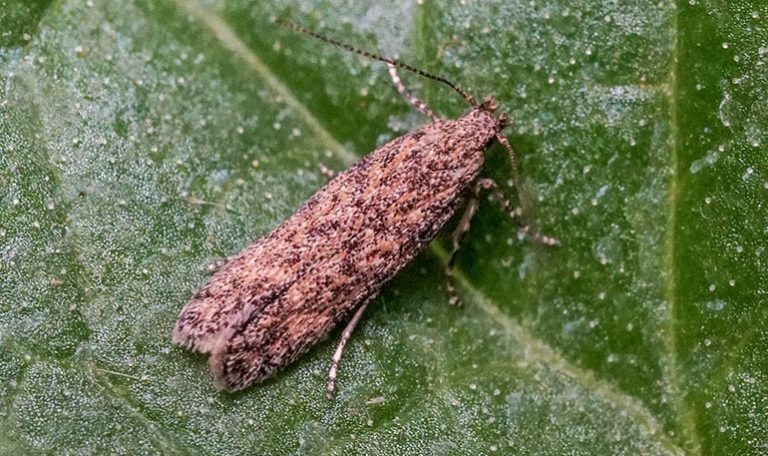
Growers are becoming increasingly concerned about the damage Tuta absoluta can cause. This tomato pest has spread rapidly throughout tomato-growing regions as people increasingly move around the globe and trade between countries.
Between the 1960s and 1990s, the moth spread from Peru to all South American countries, becoming an invasive, non-native pest. Then in 2006, it was discovered for the first time outside South America, in Spain. Within the space of a few years, Tuta absoluta had spread to most countries around the Mediterranean Sea.
Fifteen years later, Tuta absoluta is today present throughout Europe, the Middle East, Africa and parts of Asia.
Tuta absoluta in tomato crops
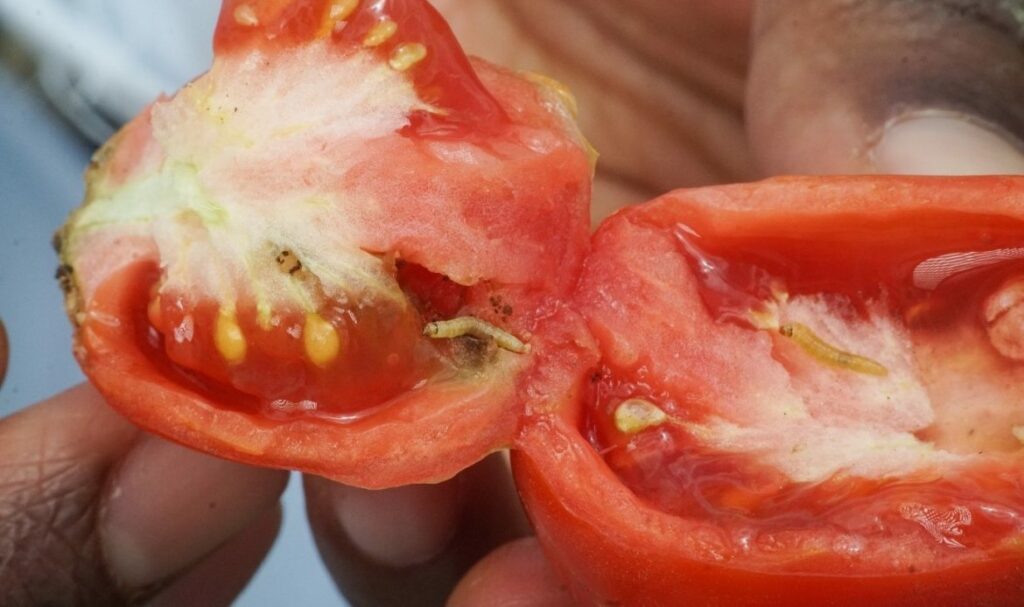
In the areas that Tuta absoluta has invaded, it has quickly started to affect economies and growers’ incomes. CABI recently published a research paper that revealed the annual impact of invasive pests and species like Tuta absoluta in Africa. Tomato crop losses cost African economies USD $10.1 billion each year.
In 2017, Tuta absoluta ravaged Africa, decimating tomato crops. At the time, smallholder farmers in Kenya, like Elias Kamuga, were reporting massive tomato crop losses.
“I have suffered losses amounting to 90%. I have no other source of income apart from tomato farming. I was relying on this crop to feed my family.”
Tuta absoluta is a tomato crop pest that many smallholders do not know how to address, and its sudden arrival into new regions means that farmers often do not have prior knowledge about the pest and, therefore, no experience of managing its spread.
Tuta absoluta lifecycle
Tuta absoluta has a four-stage lifecycle: egg, larva, pupa and adult. It is the larval stage that causes damage to several parts of the plant.
The female Tuta absoluta moths lay their eggs individually on the underside of leaves, stems and sepals (the leaves that encase flowers).
The larvae emerge from the eggs. They feed on the tomato plant, including green tomatoes. They create ‘mines’ in the plant where they feed (hence the name ‘tomato leafminer’).
The larvae depart the ‘mines’ they have created from feeding and build silk cocoons on small leaves or in the soil, but they can also pupate inside mines or fruit without building cocoons.
The adult moth emerges. Adult moths can fly up to a distance of 100 kilometres.
See ResearchGate for a Tuta absoluta lifecycle diagram.
Tuta absoluta symptoms
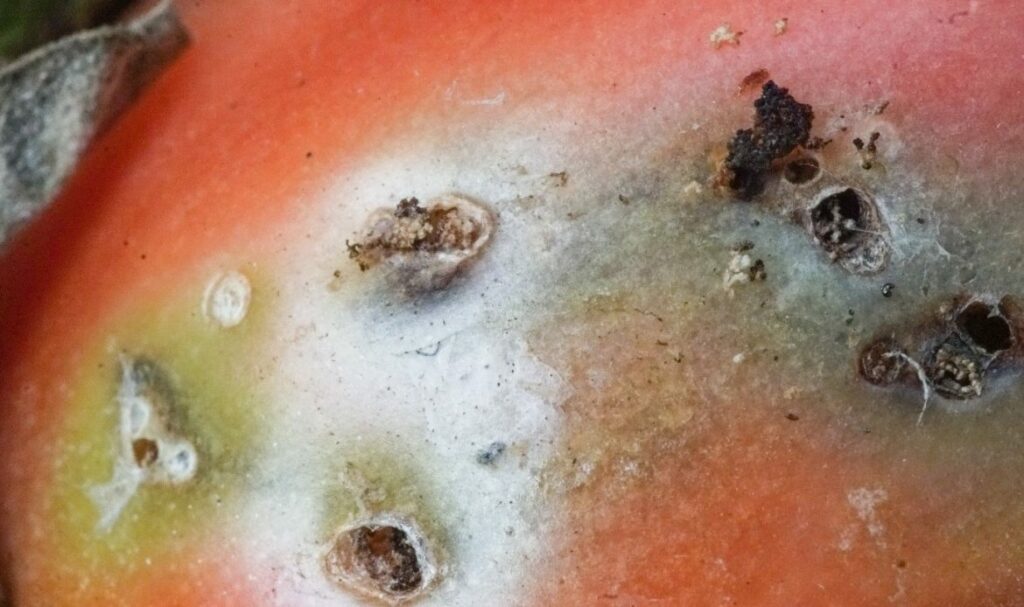
As tomato is one of the most consumed fruits in the world, growers want to be able to recognise and address Tuta absoluta in their crops as quickly as possible. When Tuta absoluta attacks a tomato crop some of the key symptoms to watch out for are:
- Evidence of boring or internal feeding across the whole plant, including on the fruit, growing points, flowers, leaves and stems.
- The fruit is an abnormal shape and/or reduced in size.
- Obvious exit holes on the fruit.
- The fruit drops, and the flowers fall or shed prematurely.
- Evidence of external feeding on the flowers and leaves.
- Leaves grow in abnormal forms or shapes or remain folded or rolled.
- The whole plant dies back.
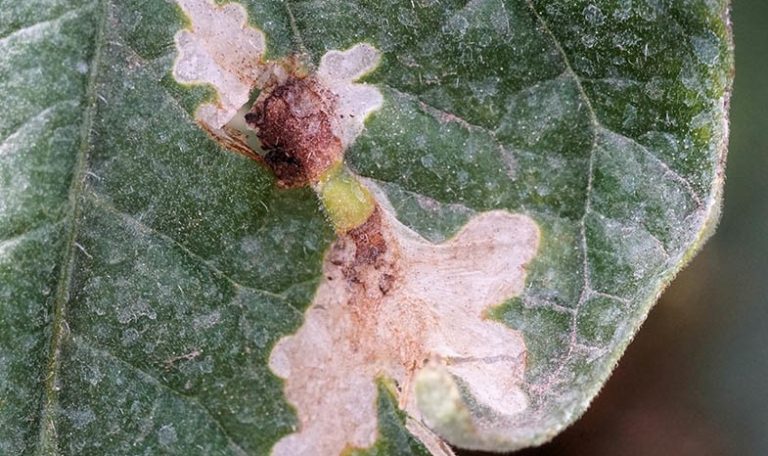
Tuta absoluta identification
Tuta absoluta is identified by lots of different names. Its preferred scientific name is Phthorimaea absoluta but, before that, it was called Tuta absoluta, a name that stuck. Other scientific names have included Gnorimoschema absoluta, Scrobipalpula absoluta and Scrobipalpuloides absoluta. Its preferred common name is tomato leafminer, but it is also known as the South American tomato moth and the South American tomato pinworm.
It is important to be able to identify Tuta absoluta at its various stages of development, from egg to moth. Below, we describe the changes in colour and shape.
Egg

The eggs are oval in shape, about one-third of a millimetre (0.35mm) long, and vary in colour from white to yellow. They become darker as the embryos form and eventually become brown before hatching.
Larva
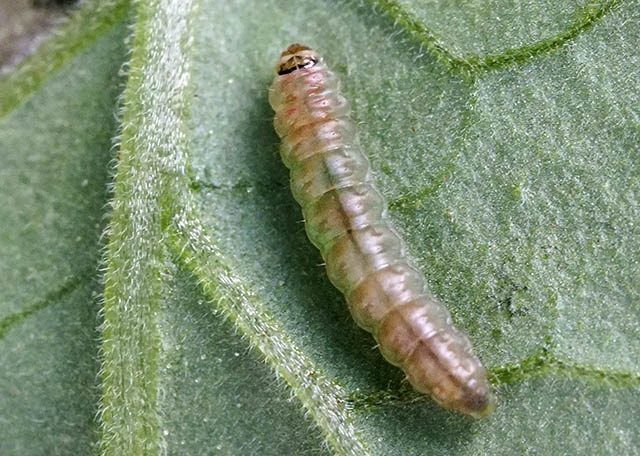
After hatching, the larvae are white in colour but become green after feeding on plants. Full-grown, they are about 7.5 mm long. As they develop, their colour changes to light pink although the green leaves they eat can influence the exact colour they become. As the larvae develop further, the pink colour becomes more noticeable, and a black-brown pattern appears behind the head.
Pupa

Before the caterpillar becomes a pupa, its colour changes again, becoming lighter green than the feeding larvae. The pupae are about 5 mm long. At first, they look green in colour but turn dark brown before the adult moth emerges.
Adult
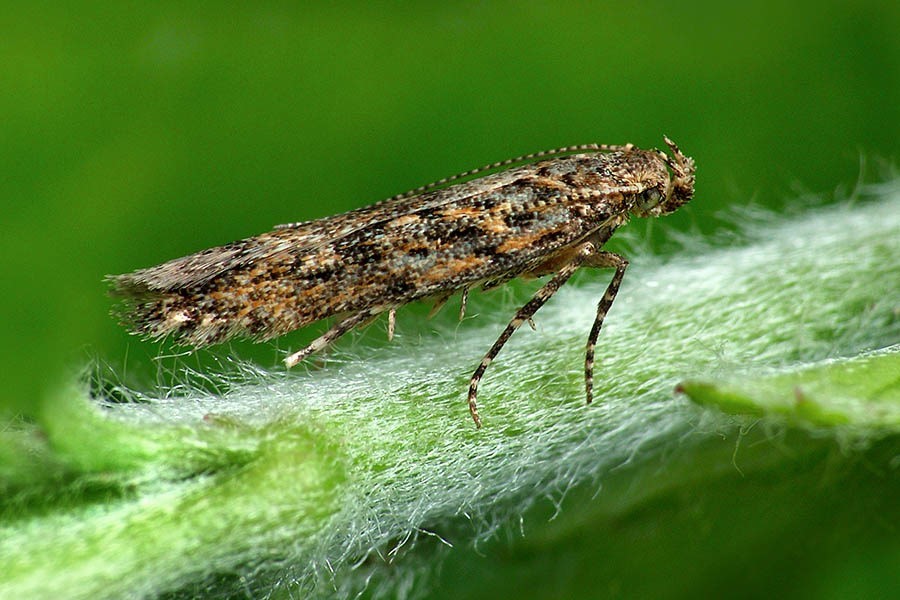
Adult moths are about 10 mm long and covered by silver-grey scales. The antennae have a threadlike shape, alternating between light and dark segments. Their mouths are made of flap-like folds.
Getting rid of Tuta absoluta: control methods
The rapid spread of Tuta absoluta has led to an urgent need for accurate information about sustainably managing the pest. Until recently, one of the main control methods was chemical pesticides, but now growers have more environmentally friendly options to explore.
In 2020, for example, CABI and Koppert Biological Systems undertook a project in Kenya to show how biological control and integrated pest management (IPM) can help address Tuta absoluta. Read more about the Tuta absoluta project here.
Biocontrol and biopesticides
Biological control (or biocontrol) is the use of living organisms and naturally sourced (or nature-identical) compounds to control pest and disease populations.
Invertebrate biological control agents (or macrobials) and biopesticides can be effective approaches for controlling Tuta absoluta in a natural way.
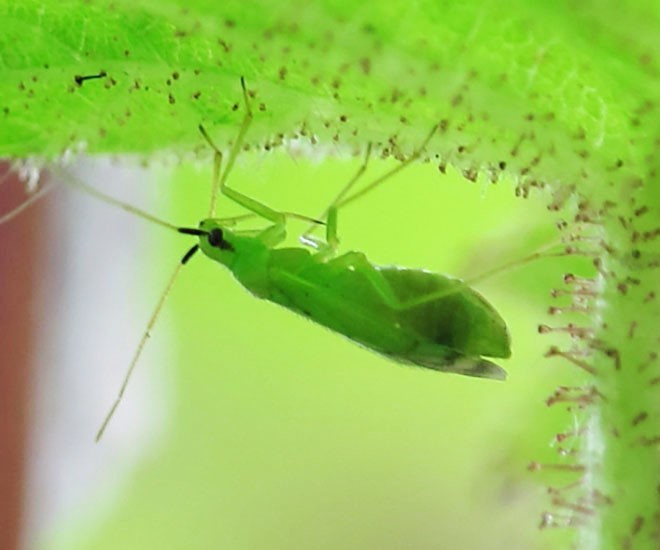
For example, predatory mirid bugs can control Tuta absoluta. Two predatory mirids (Nesidiocoris tenuis and Macrolophus pygmaeus) are sometimes found naturally but both can also be bought commercially as biocontrol controls in certain countries, such as in Spain and France.
Aside from mirids, other biocontrol agents and active ingredients have been commercialised for the control of Tuta absoluta. To find out what you can use in your country, use the CABI BioProtection Portal.
For more information about biological control in general, see What is biological control, and how does it work?
Integrated Pest Management (IPM)
Integrated pest management (IPM) is an agricultural method of controlling pest populations and aims not to eradicate pests altogether but to control them to manageable levels or below what is called the economic injury level (EIL) or the point at which the cost of pest damage to the crop exceeds the cost of managing the pest itself.
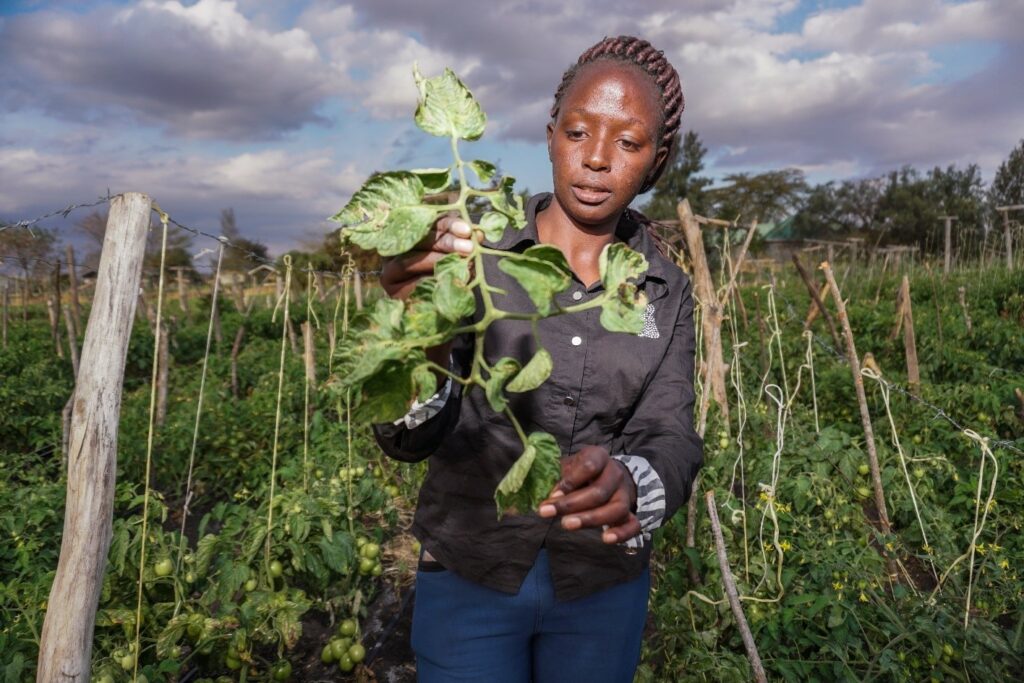
IPM includes: monitoring pest populations, using biological control (see above), mechanical control and preventative cultural practices.
Some of the IPM recommendations for controlling Tuta absoluta include using homemade products made from plants known to have a pesticide effect, adapting specific cultural practices that conserve native natural enemies and using short-duration varieties whenever appropriate.
For more information about managing Tuta absoluta, watch Managing Tuta absoluta through biological crop protection approaches.
1 Comment
Leave a Reply
Related News & Blogs
Biological control in action: Zambia’s field days on fighting fall armyworm
Experts from CABI recently held two field days and an expo in Zambia, showcasing innovative approaches to pest management to 584 farmers, agro-dealers and other stakeholders to help raise awareness of approaches to tackle the invasive fall armyworm (Sp…
11 June 2025





Very helpful information.
Thank you!